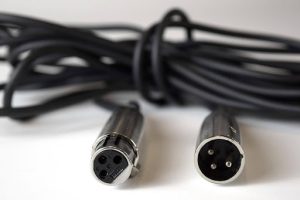Mapping out Santa’s Movement to Automation

Automation can be hugely beneficial for many companies; as automation becomes more and more ingrained in our daily lives, it’s likely that people are going to start moving more toward automated work whenever possible. While this is a concern for large companies, it’s also a concern for smaller companies. Let’s see mapping out Santa’s movement to automation.
Arguably, Santa could be considered one of the largest companies on Earth. After all, he would probably have to deliver around 526 million presents to deliver one to every child who believes in Santa Claus or the equivalent in their culture. If Santa went virtual, what would he have to change?
Table of Contents
Automating Customer Service
The “customer service” that Santa offers revolves around writing letters to children. Every year, the United Nations estimates that around seven million letters to Santa go through the post office. Still, what if Santa decided to give every single child who believes in him the option to have a phone call with the North Pole?
To do this, Santa would need a call center of around 28,822 elves working at the average customer service agent’s rate of 50 calls per day. At this size, Santa’s call center would be over five times larger than the next largest call center in the United States. Plus, he would have to make sure that his elves speak dozens of languages so he could reach all the children.
Automating the Manufacturing of Toys
Most people assume that Santa manufactures the toys he brings to children around the world. This is further exemplified by the traditional understanding that Santa has his elves craft the toys. However, he might be able to improve his manufacturing processes if he utilizes automation.
The ToyMaker 3000, which is a robot at the Museum of Science + Industry in Chicago, can produce up to 300 toys per hour. If he were able to run the robots 24/7, Santa would need 200 manufacturing lines to produce a single toy per child. Because nine robots replace the labor of about 140 full-time workers, Santa’s automated toy factory would be doing the work of 112,085 eight-hour elf shifts.
Automating Delivery
The delivery process is another way Santa might be able to automate some of his work. Throughout Christmas Eve, Santa has to deliver a whopping 6,100 presents every single second. That’s a complicated delivery schedule, which is why Santa might want to consider outsourcing the delivery process to some “reindeer drones.”
If one were to assume that about 55% of kids live in an urban area where Santa could deliver by drone, that’s around 289 million kids that Santa could deliver by drone. To cover all these kids, Santa would probably need around 12 million drones.
Automating Punishments for the “Bad Kids”
Tradition is that Santa gives “bad kids” a lump of coal as their punishment. Although most kids never actually receive a lump of coal, it does create an interesting question: what would Santa have to do if every single child was naughty enough to receive a lump of coal rather than a present?
As a matter of fact, due to the massive amounts of coal that the United States produces, it would actually be easier for Santa to get coal than it would be for him to make presents. To give each child a lump of coal, he would need 19,000 short tons of coal, which sounds like a lot until you realize it’s only 13 minutes of coal production.
Conclusion
Santa should definitely tap into some of the automation options that more and more companies are taking advantage of nowadays. With automation possibilities of all kinds, Santa could clear up some time for himself and his elves to focus on expanding their already global reach. Plus, real-life companies can do this too, taking some time to pay attention to their digital strategies.








